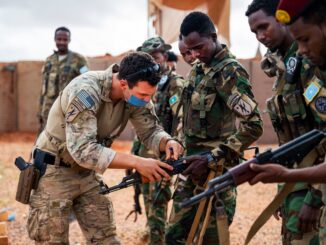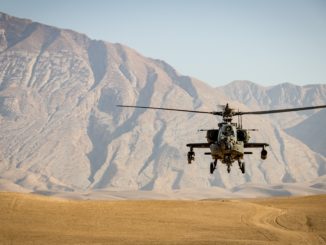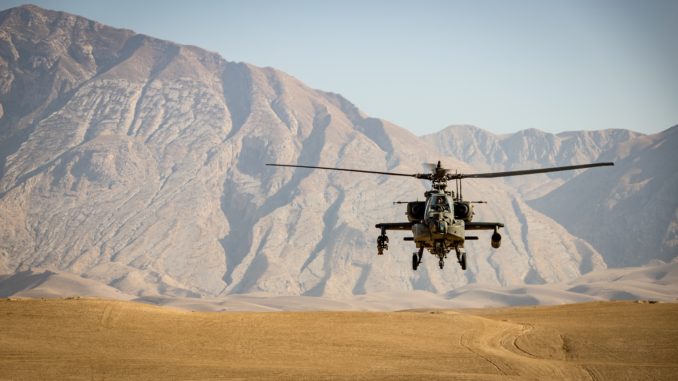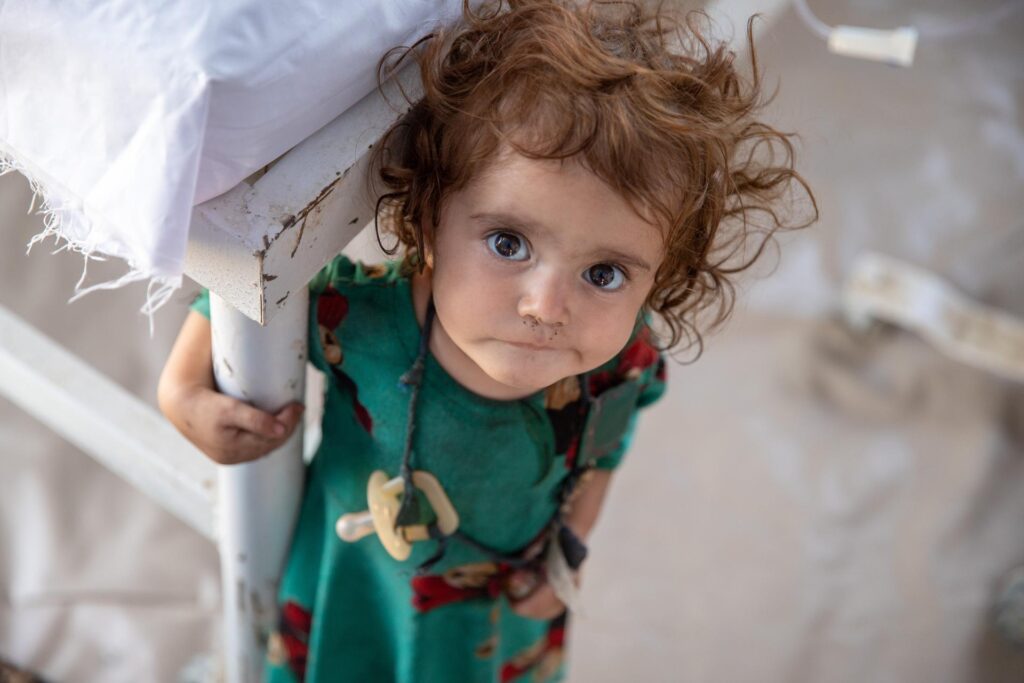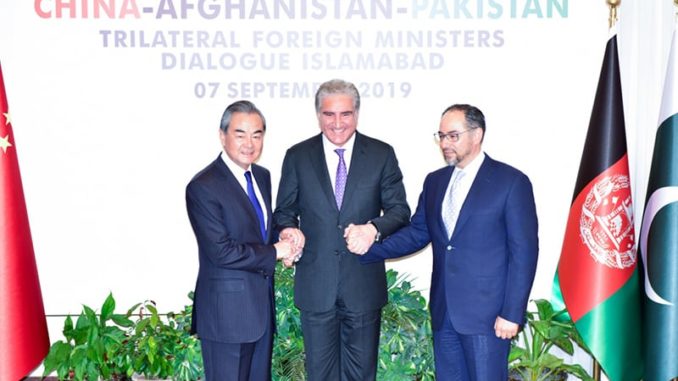
The United States, which has prosecuted a war against Afghanistan since October 2001, has promised to withdraw its combat troops by September 11, 2021. This war has failed to attain any of the gains that were promised after 20 years of fighting: neither has it resulted in the actual fragmentation of terrorist groups nor has it led to the destruction of the Taliban. The great suffering and great waste of social wealth caused due to the war will finally end with the Taliban’s return to power, and with terrorist groups, which are entrenched in parts of Central Asia, seizing this prospect to make a full return to Afghanistan.
Civil War
There are two forms of war that exist in Afghanistan.
First, there is the war prosecuted by the United States—and the North Atlantic Treaty Organization—against their adversaries in Afghanistan. The U.S. and NATO have allied with a range of political projects, which certainly includes the government of the President of Afghanistan Ashraf Ghani. This is the war that the U.S. and NATO have indicated will now be ending.
Second, there is the ongoing civil war between the Ashraf Ghani government, backed by the West, and the forces around the Taliban. This is a war among Afghans, which has roots that go back several decades. As the first form of the war ends, the civil war will continue. The two principal forces in Afghanistan—the government of Ashraf Ghani and the Taliban—are unwilling to form a government of national unity or to create a mechanism to end the civil war.
Failure of peace talks between the various stakeholders in Afghanistan—including the United States—in Doha, Qatar, suggests the continuation of the civil war. The United States, since 2001, has not drawn up any serious political road map for a withdrawal. The U.S. will leave as it came, with the U.S. troops taking off as abruptly as they arrived.
Already, the Afghan National Army is weakened, much of the Afghan territory outside its full control. In recent months, the Taliban has been keeping its powder dry, waiting for the U.S. to withdraw before it steps up its attack against the government in Kabul. A report by the Analytical Support and Sanctions Monitoring Team, which was submitted to the United Nations Security Council on June 1, suggests that Al Qaeda and the Haqqani network prepare to strike as soon as the opportunity arises. Al Qaeda is “such an ‘organic’ or essential part of the insurgency that it would be difficult, if not impossible, to separate it from its Taliban allies,” the report noted.
A Pakistani intelligence official, who is well-informed about the situation in Afghanistan, told me that the countryside will gradually slip further out of Kabul’s control, with the Taliban and its allies—including Al Qaeda and other regional terrorist groups—confident of victory by the end of the summer in 2022.
There is no appetite either in the United States or in Central Asia for the continuation of the U.S. military presence. Nothing good has come of it, and it does not promise any advantage in the future.
Regional Possibility
On June 3, 2021, Afghanistan’s Foreign Minister Mohammad Haneef Atmar, China’s Minister of Foreign Affairs Wang Yi, and Pakistan’s Foreign Minister Shah Mahmood Qureshi held their fourth trilateral dialogue. This was the first high-level meeting held since September 2019. There was no direct reference to the withdrawal of the U.S. forces, but it set the context for the two most important outcomes of the meeting.
First, China pledged to play a “constructive role” to improve the long-fraught relations between Afghanistan and Pakistan, which have become more heated up because of the regional conflict between India and Pakistan. China has close ties with the governments in both Afghanistan and Pakistan, with the Belt and Road Initiative (BRI) requiring peace in Central Asia for the success of the massive infrastructure and trade project, which runs from China’s Pacific coast to the Indian Ocean and to the Mediterranean Sea. China’s leverage over these countries is considerable. Even if China can create a modus vivendi between President Ghani and Pakistan’s Prime Minister Imran Khan, it does not settle the deeper problems, such as the military weakness of Ghani’s government.
Second, based on these governments’ cooperation in the counterterrorism process, the foreign ministers agreed to jointly tackle terrorist outfits that operate in Afghanistan and in its neighboring countries: such as the Turkistan Islamic Party or East Turkestan Islamic Movement (ETIM), ISIS, and Tehrik-i-Taliban Pakistan (TTP). Pakistan’s government is troubled by the operations of the TTP, which operates along the borderlines of the two countries but is based in Afghanistan’s Paktika province. China, meanwhile, is very concerned about the ETIM, which operates in Afghanistan and Tajikistan and has been trying to destabilize the Chinese province of the Xinjiang Uyghur Autonomous Region. The ETIM has close ties with the Taliban, which—while it has held discussions with the Chinese—understands that its use of the ETIM gives it leverage against China. Whether or not these three governments will actually be able to weaken these terrorist groups, incubated by the Taliban, is unclear.
Tangled Web
It now seems impossible for the United States to formally remain in Afghanistan. There is simply no political will for the troops to remain in the country, even as the U.S. will keep paramilitary and mercenary forces in Afghanistan.
Given the heightened U.S. pressure on China, however, there is plenty of evidence that the U.S. is not unhappy with the possibility of instability that will come to the heart of Asia after the summer of 2021. In 2003, the U.S. designated the ETIM as a terrorist group, but it removed it from that list in 2020. This is clear evidence of the U.S. motives to destabilize China’s Xinjiang province.
The Pakistani intelligence official suggests that if the Taliban takes Kabul, groups such as the TTP and the ETIM will be emboldened to conduct attacks in Pakistan and China respectively. These groups, he tells me, will fight alongside the Taliban to weaken Kabul’s hold and to use the countryside to launch these attacks; there is no necessity for the Taliban to actually take control of Kabul.
The question that remains is whether or not the Taliban can be divided. The Taliban is a tangle of Afghan nationalism and patriotism as well as various forms of political Islam. There are elements in the Taliban that are far more nationalistic and patriotic than they are committed to the Islamist currents. Attempts to peel the “moderates” away from the more hardcore sections have largely failed, which has been evident since at least former U.S. President Barack Obama’s failed plea to the “moderate Taliban” in 2009.
There is simply not sufficient strength in Afghanistan’s society to resist the spread of the Taliban. Nor is there an organized capacity of Afghan citizens present yet to build a new bloc against both the failed U.S.-backed governments (from Hamid Karzai to Ghani) and the Taliban. But if Afghanistan’s neighbors cut off their support to the Taliban, and if they are able to deepen an economic project (such as the BRI), then there is the possibility for this new bloc to eventually emerge. That is why the dialogue between Afghanistan, China, and Pakistan is central. It might, in fact, be more important in the long run than the conversations with the Taliban.
This article was produced by Globetrotter.
Vijay Prashad is an Indian historian, editor and journalist. He is a writing fellow and chief correspondent at Globetrotter. He is the chief editor of LeftWord Books and the director of Tricontinental: Institute for Social Research. He is a senior non-resident fellow at Chongyang Institute for Financial Studies, Renmin University of China. He has written more than 20 books, including The Darker Nations and The Poorer Nations. His latest book is Washington Bullets, with an introduction by Evo Morales Ayma.

